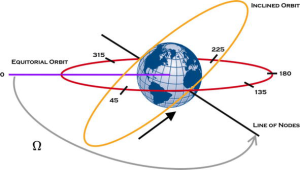A spacecraft attitude control system is vital for ensuring that a spacecraft maintains the correct orientation in space. This system is responsible for pointing the spacecraft in the desired direction, whether it’s toward Earth, the sun, or other celestial objects. By controlling the spacecraft’s orientation, it can perform critical functions such as communication, imaging, and power generation effectively.

The spacecraft attitude control system operates by sensing the current orientation of the spacecraft and making adjustments as needed to maintain or change its position. It uses a combination of sensors, actuators, and algorithms to accomplish this.
Different types of spacecraft attitude control systems exist, depending on the mission requirements. These include:
Passive control systems rely on natural forces, such as the gravitational pull of celestial bodies or magnetic fields, to maintain orientation. These systems are simpler and less expensive but offer limited precision and flexibility.
Active control systems use sensors and actuators to continuously monitor and adjust the spacecraft’s orientation. These systems offer greater accuracy and are used in missions that require precise pointing, such as Earth observation satellites or space telescopes.
In spin stabilization, the spacecraft is rotated around a central axis. This method provides stability but can limit the spacecraft’s ability to perform tasks that require specific orientation, such as pointing cameras or antennas.
The spacecraft attitude control system is made up of several key components, each contributing to the accurate control of the spacecraft’s orientation:
Star trackers are highly accurate sensors that capture images of stars and compare them with an onboard star catalog to determine the spacecraft’s attitude. They are commonly used in missions that require precise pointing, such as telescopes or deep-space probes.
Gyroscopes measure the rate of rotation of the spacecraft and are used in combination with other sensors to maintain orientation. Gyroscopes are essential during periods when the spacecraft is not receiving external references, such as in eclipse conditions.
Reaction wheels provide precise control of a spacecraft’s orientation by spinning in one direction, which causes the spacecraft to rotate in the opposite direction. They are widely used in active control systems for their accuracy and smooth control.
Control moment gyroscopes (CMGs) are used in larger spacecraft to provide powerful torque for attitude adjustments. Unlike reaction wheels, CMGs can provide larger and faster changes in attitude, making them ideal for large-scale missions.
A well-designed spacecraft attitude control system is crucial for mission success. Whether it’s maintaining communication links with ground stations or pointing scientific instruments at distant objects, accurate attitude control ensures the spacecraft can fulfill its mission objectives.
Maintaining the correct orientation in space is not without challenges. Some of the key issues faced by spacecraft attitude control systems include:
The technology behind spacecraft attitude control systems continues to evolve, with several advancements improving performance and reliability:
The spacecraft attitude control system is used in a variety of space missions, ranging from communication satellites to deep-space exploration. Here are a few key applications:
Earth observation satellites rely on precise orientation to capture high-resolution images of the planet’s surface. The attitude control system ensures the satellite remains properly aligned to perform continuous imaging, weather monitoring, and environmental analysis.
Space telescopes like the Hubble Space Telescope require ultra-precise pointing to observe distant stars, galaxies, and other celestial phenomena. The attitude control system ensures the telescope stays pointed at its target, allowing for long-exposure observations.
For communication satellites, maintaining a stable orientation is crucial for ensuring continuous signal transmission between the satellite and ground stations. The attitude control system plays a key role in keeping communication links stable.
The spacecraft attitude control system is an essential component of modern space missions, enabling precise orientation and stability in the challenging environment of space. From communication satellites to space telescopes, these systems provide the accuracy and control necessary for mission success. With ongoing technological advancements, the future of attitude control systems promises even greater capabilities, ensuring that spacecraft continue to achieve their objectives in space exploration and satellite operations.
Send us a message,we will answer your email shortly!